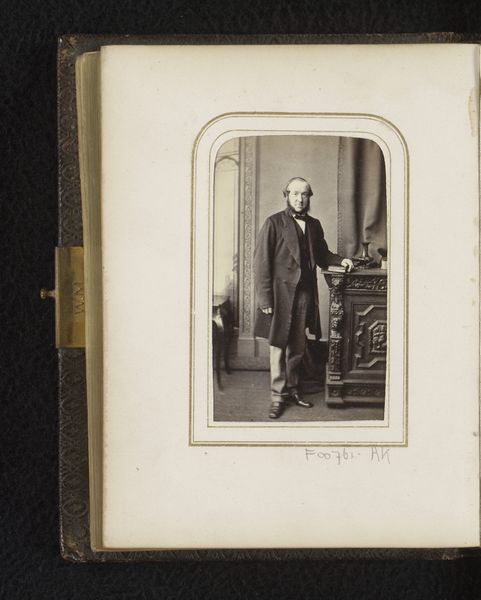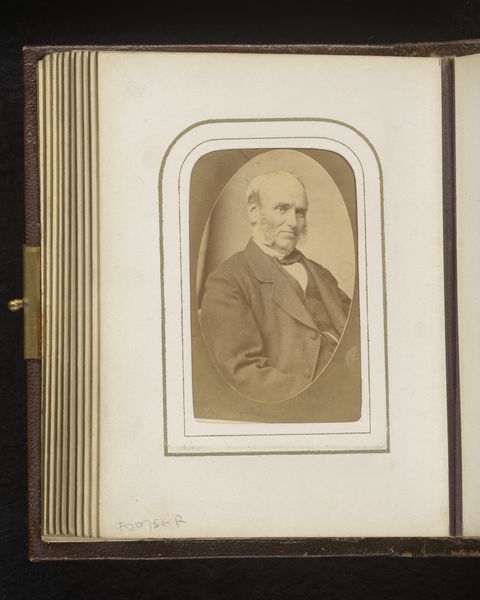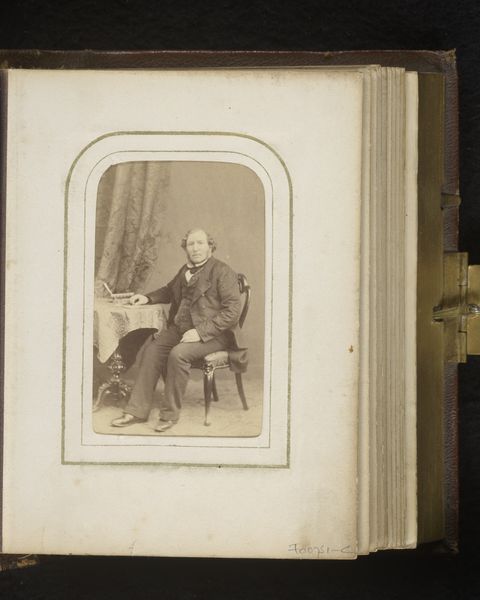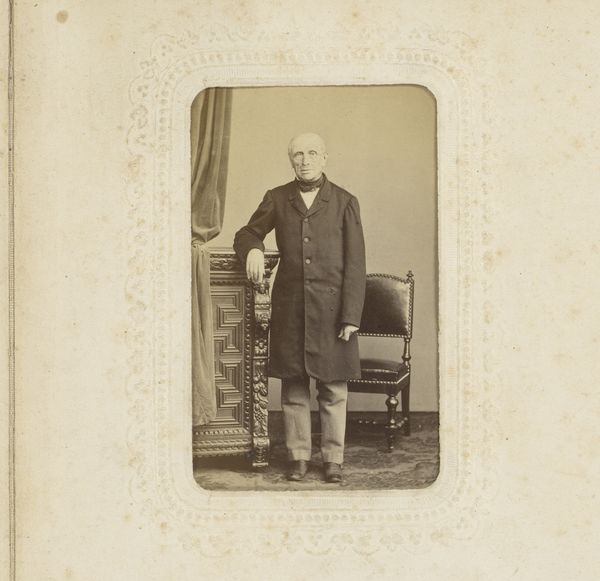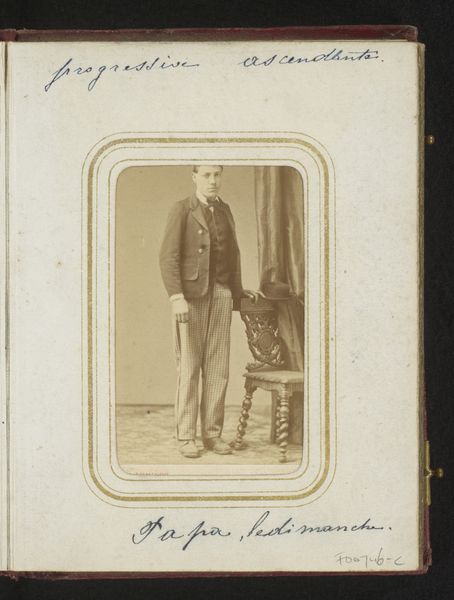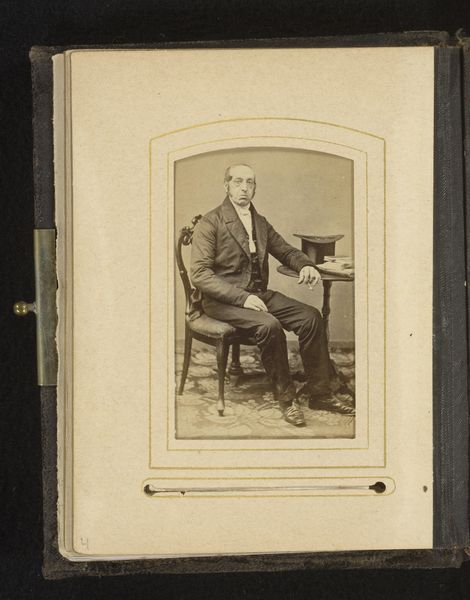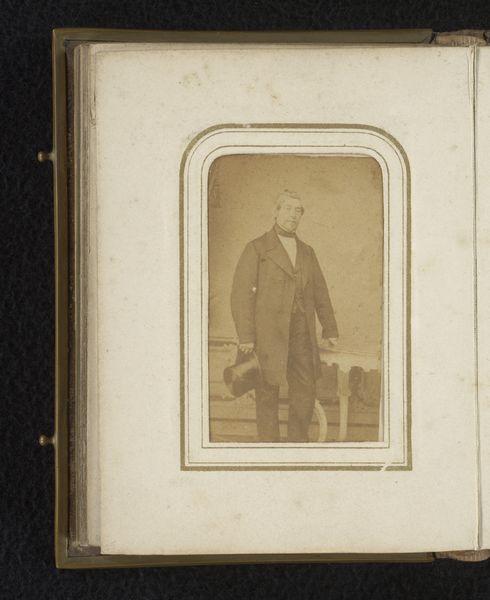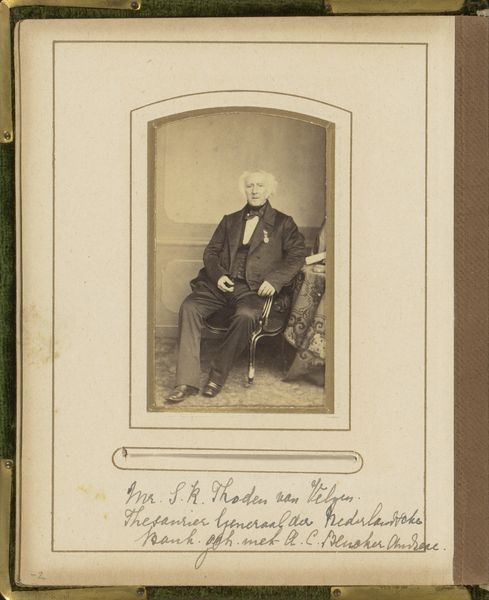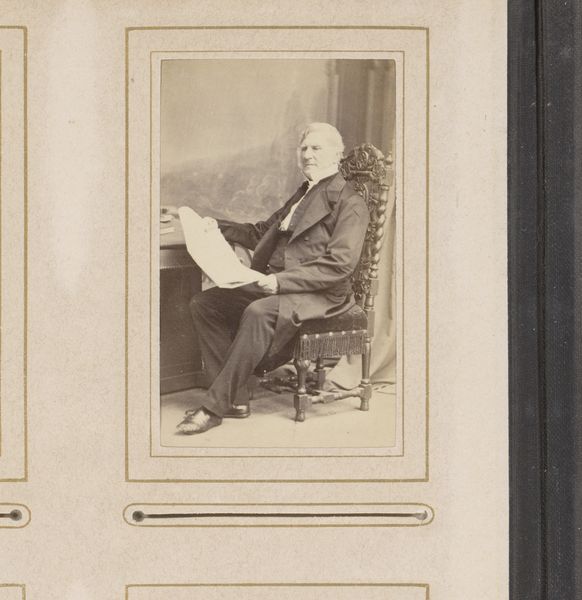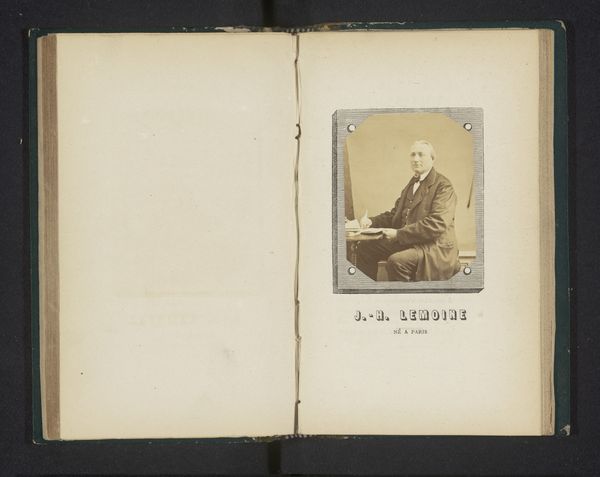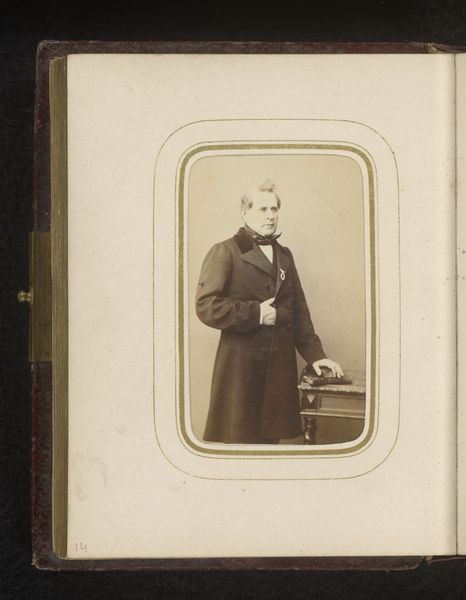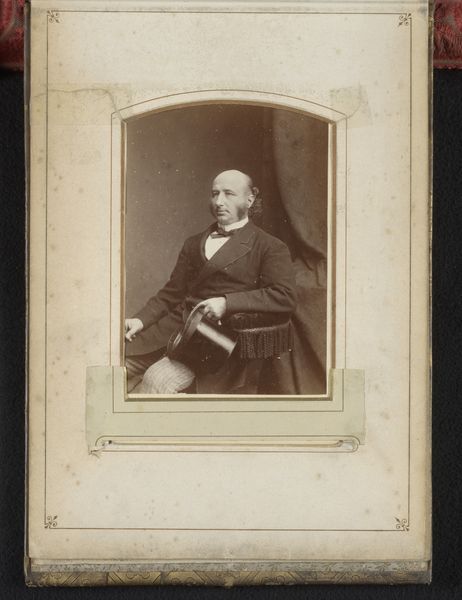
daguerreotype, photography, albumen-print
#
portrait
#
daguerreotype
#
photography
#
albumen-print
#
realism
Dimensions: height 87 mm, width 51 mm
Copyright: Rijks Museum: Open Domain
Editor: Here we have John Jabez Edwin Mayall’s "Portrait of a Seated Man with Gloves," dating from around 1850 to 1860. It appears to be an albumen print, and what strikes me is how ordinary yet dignified this gentleman seems. What do you see when you look at this, bearing in mind that it is photography dating to the mid-19th century? Curator: As a materialist, I am particularly interested in the photograph as a manufactured object. Its creation involved a complex interaction of chemical processes, manual labor, and evolving technological tools. Look at the fine detail achieved with the albumen print - it was a relatively new process. How did this accessibility of representation democratize portraiture and challenge painting’s monopoly on capturing likeness? Editor: That's an interesting point, and something I hadn't considered before. So the materiality of the photographic print, being reproducible, disrupted pre-existing hierarchies around artistry, subject, and craft, then? Curator: Precisely. Before, only the wealthy could afford portraiture. Now, we see a growing middle class seeking to memorialize their existence. Notice the sitter’s gloves: gloves were a commodity, manufactured through a complex system of labour; the decision to display his gloved hand in the photograph communicates social positioning, aspirations, even access. Photography as a medium becomes entangled with labour practices and economies of material exchange. Editor: So you’re suggesting the very *means* by which this image was created–from the photographer’s studio to the chemical processes and global economy of materials involved–tells a story just as compelling as the sitter’s identity? Curator: Absolutely. Consider the social conditions which give rise to this photograph’s creation; it marks the advent of technology as a social force. The rise of the bourgeoisie. A nascent world system with colonies to supply material for this new popular mode of capturing existence. The picture presents more than a representation; it is the result of forces that defined the age in its visual aesthetic. Editor: This really challenges the way I traditionally viewed art history. Thank you for pointing this out, I hadn't considered the sheer range of labor and production, involved in making even simple photographs. Curator: It is this awareness that brings materiality to bear on art history as a way of questioning traditional understanding of the hierarchy between artistic production and consumption.
Comments
No comments
Be the first to comment and join the conversation on the ultimate creative platform.
